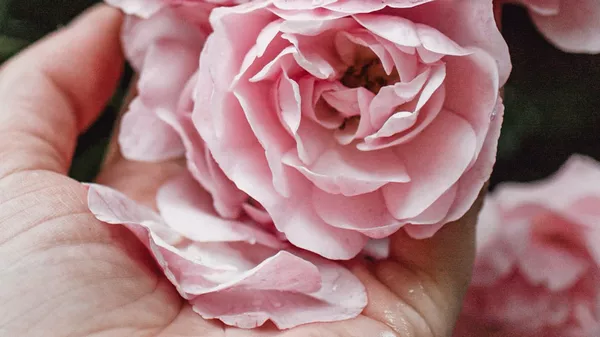1. Understanding Mildew
Roses, often heralded as the epitome of beauty in gardens, can sometimes fall victim to the unsightly menace of mildew. Mildew, a type of fungal disease, can manifest in various forms, with powdery mildew and downy mildew being the most common culprits affecting roses.
Types of Mildew Affecting Roses:
Powdery Mildew: This form of mildew appears as white or gray powdery spots on the leaves, stems, and buds of roses. It thrives in warm, humid conditions and can spread rapidly if left unchecked.
Downy Mildew: Unlike powdery mildew, downy mildew presents itself as yellow or brown spots on the upper surface of leaves, accompanied by a downy, grayish growth on the underside. It tends to thrive in cooler, wetter conditions.
Causes of Mildew on Roses:
Several factors contribute to the development of mildew on roses:
High Humidity: Warm, humid environments create the perfect breeding ground for mildew spores to proliferate.
Poor Air Circulation: Insufficient airflow around rose plants can encourage the buildup of moisture, providing an ideal habitat for mildew.
Damp Conditions: Excessive moisture on foliage, either from rain or overhead watering, can facilitate mildew growth.
Signs and Symptoms:
Recognizing the signs of mildew infestation is crucial for early intervention:
- White Powdery Spots: Powdery mildew manifests as powdery white spots on leaves, stems, and buds.
- Yellowing Leaves: Downy mildew often causes yellow or brown spots on rose leaves, accompanied by a downy growth on the underside.
- Distorted Growth: In severe cases, mildew can cause distortion or stunted growth in roses.
Consequences of Untreated Mildew:
Failure to address mildew promptly can lead to detrimental effects on rose plants:
- Weakened Plant: Mildew weakens the plant’s ability to photosynthesize and absorb nutrients, resulting in overall diminished health.
- Defoliation: Severe infestations may cause premature defoliation, leaving the plant vulnerable to further stressors.
Plant Death: If left untreated, chronic mildew infestations can ultimately lead to the death of the rose plant.
2. Getting Rid of Mildew
DIY Methods for Removing Mildew:
Several homemade remedies can effectively combat mildew on roses:
- Baking Soda Solution: Mix 1 tablespoon of baking soda, 1 teaspoon of mild dish soap, and 1 gallon of water. Spray the solution on affected areas of the plant.
- Milk Spray: Dilute milk with water in a 1:9 ratio and spray it on the foliage. The proteins in milk act as natural fungicides.
- Neem Oil: Dilute neem oil according to package instructions and apply it to affected areas. Neem oil disrupts the growth and reproduction of fungi.
- Potassium Bicarbonate: Mix 1 tablespoon of potassium bicarbonate with 1 gallon of water and spray it on the foliage. Potassium bicarbonate alters the pH of the leaf surface, making it less hospitable to mildew.
Commercial Fungicides:
When DIY methods are insufficient, commercial fungicides can provide effective control:
- Systemic Fungicides: These fungicides are absorbed by the plant and provide long-lasting protection against mildew.
- Contact Fungicides: Contact fungicides remain on the surface of the plant and protect against mildew through direct contact.
- Biological Fungicides: These products contain beneficial microorganisms that compete with mildew for resources, reducing its growth.
Safety Precautions:
When using fungicides, it’s essential to prioritize safety:
- Read and Follow Instructions: Carefully read and adhere to the instructions provided on fungicide labels.
- Wear Protective Gear: Use gloves, goggles, and a mask to protect yourself from exposure to chemicals.
- Avoid Contact with Skin and Eyes: Minimize skin and eye contact with fungicides to prevent irritation or injury.
- Keep Out of Reach of Children and Pets: Store fungicides in a secure location inaccessible to children and pets.
Application Techniques:
To maximize the effectiveness of treatments:
Apply Evenly: Ensure thorough coverage of the affected plant parts, including the undersides of leaves.
Apply in Ideal Conditions: Apply fungicides on a calm, dry day to minimize drift and maximize adherence to foliage.
Repeat as Necessary: Follow up with additional applications as directed on the fungicide label to achieve optimal control.
3. Preventing Mildew
Improving Air Circulation:
Enhancing airflow around rose plants can help prevent mildew:
- Pruning: Regularly prune rose bushes to remove overcrowded or crossing branches, allowing for better air circulation within the canopy.
- Proper Spacing: Plant roses with adequate spacing between them to prevent overcrowding, which can impede airflow.
Watering Practices:
Optimal watering practices can discourage mildew formation:
- Water at the Base: Direct water to the base of the plant rather than overhead, minimizing moisture on foliage.
- Avoid Overhead Watering: Overhead watering can create an environment conducive to mildew growth, so use drip irrigation or a soaker hose instead.
Choosing Resistant Varieties:
Selecting mildew-resistant rose varieties can mitigate the risk of infestation:
- Research: Choose rose varieties known for their resistance to mildew based on recommendations from local nurseries or gardening experts.
- Consult Resources: Utilize resources such as plant catalogs or online databases to identify mildew-resistant rose cultivars suitable for your region.
Regular Monitoring and Early Detection:
Vigilance is key to preventing mildew outbreaks:
- Inspect Regularly: Routinely inspect rose plants for signs of mildew, such as white powdery spots or yellowing leaves.
- Act Promptly: If mildew is detected, take immediate action using appropriate control measures to prevent its spread and minimize damage to the plants.
Conclusion
In conclusion, combating mildew on roses requires a multifaceted approach that encompasses understanding the nature of the disease, employing effective removal methods, and implementing preventative measures to safeguard against future infestations. By incorporating these strategies into your rose care regimen, you can ensure healthy, vibrant blooms that enhance the beauty of your garden for years to come.


